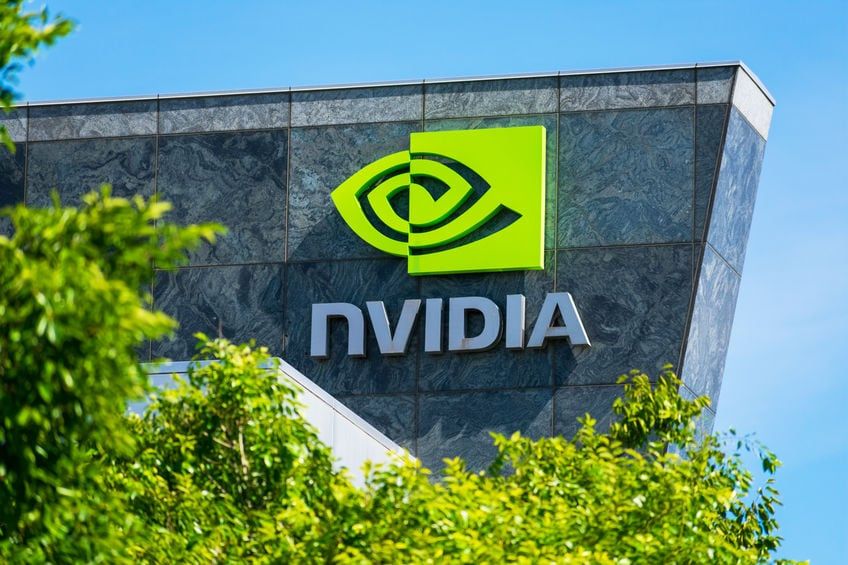Nvidia has had a year that few companies could have predicted, solidifying its position as one of the most influential players in the technology sector.
With revenue soaring, stock prices reaching record highs, and a growing dominance in artificial intelligence (AI) infrastructure, the company’s influence now extends beyond the tech industry, reshaping entire markets and drawing significant attention from investors worldwide.
Revenue growth and market cap milestone
Nvidia’s rise to prominence in 2024 can largely be attributed to its early investments in AI technologies.
As the generative AI wave gained momentum, Nvidia’s graphics processing units (GPUs) emerged as the cornerstone for AI applications, from data centers to autonomous vehicles.
This strategic positioning has resulted in Nvidia’s market capitalization repeatedly surpassing $3 trillion, trading places with Apple as the most valuable publicly traded company.
In its latest quarter, Nvidia reported $35.1 billion in revenue, with $30.8 billion—or 87%—attributed to its data center business.
These figures underscore the outsized role AI and cloud computing now play in driving Nvidia’s success.
CEO Jensen Huang has been at the forefront of this expansion, becoming one of Silicon Valley’s most sought-after executives.
The AI hardware advantage: Blackwell chip production
Central to Nvidia’s continued growth is the production of its high-powered Blackwell chip, designed specifically for AI applications.
Expected to generate billions in revenue during the fourth quarter alone, the Blackwell chip represents a significant leap in computing power.
Companies like Amazon have already begun retrofitting their data centres to accommodate the immense heat output of these processors, signalling strong demand for Nvidia’s products.
Daniel Newman, CEO of Futurum Group, highlighted Nvidia’s integrated approach to AI, emphasizing the company’s dominance in both hardware and software.
“Nvidia really has the [hardware and software] for the AI computing era,” Newman said.
“It’s all connected inside the [server] rack, outside the [server] rack, and then the software is very well liked within the developer communities.”
Competition intensifies but Nvidia holds its lead
Despite Nvidia’s dominance, competitors are racing to gain a foothold in the AI chip market. AMD, Intel, and even Nvidia’s customers are developing alternatives to Nvidia’s semiconductors.
AMD’s MI300X chips are designed to rival Nvidia’s Hopper series, while Intel’s Gaudi 3 processor aims to break into the AI space.
Additionally, hyperscalers like Google, Amazon, and Microsoft are developing their own AI chips to reduce dependence on Nvidia.
“What AMD needs to do is make software really usable, build the systems where there’s more demand with developers,” Newman said.
“Cloud providers are going to sell what their customers ask for.”
However, Nvidia remains well-positioned to weather competitive threats. As Newman noted, the backlog for Nvidia chips extends close to a year, indicating robust demand that competitors have yet to match.
Retail investor enthusiasm and market trends
Nvidia’s stellar performance hasn’t gone unnoticed by retail investors. Data from Vanda Research shows that Nvidia has attracted nearly $30 billion in net inflows from retail traders in 2024, making it the most-bought stock of the year.
By comparison, Tesla attracted $14.7 billion.
“Nvidia turned out to be the one stock that kind of stole the show from Tesla because of impressive price gains,” said Marco Iachini, senior vice president at Vanda Research.
The company’s 180% stock price increase in 2024 has made it a cornerstone of retail portfolios, with Nvidia now representing over 10% of the average investor’s holdings.
Challenges on the horizon
Despite its current success, Nvidia faces several potential challenges. One of the biggest risks stems from the transition to inferencing AI models, which require less powerful hardware than the training phase.
This shift could reduce the demand for Nvidia’s high-end chips in the future.
Additionally, Nvidia’s own customers are actively developing AI chips to diversify their supply chains. Amazon’s Trainium 2 and Google’s tensor processing units (TPUs) are prime examples.
Still, Huang remains optimistic. He has repeatedly emphasized that Nvidia’s chips are not only capable of handling AI training but excel in inferencing as well.
Looking ahead to 2025
Nvidia’s future appears bright, with the AI market projected to grow exponentially over the next several years.
While competitors like Broadcom and AMD are making inroads, Nvidia’s head start and comprehensive ecosystem of hardware and software make it the dominant force in AI computing.
As investors continue to pour into Nvidia shares, the company’s influence will likely extend beyond technology, shaping industries from healthcare to finance.
Nvidia’s ability to sustain its growth will depend on how well it navigates competition, manages supply chains, and adapts to shifts in AI technology.
The post Nvidia’s $3 trillion year: How the AI boom propelled the chip giant appeared first on Invezz

